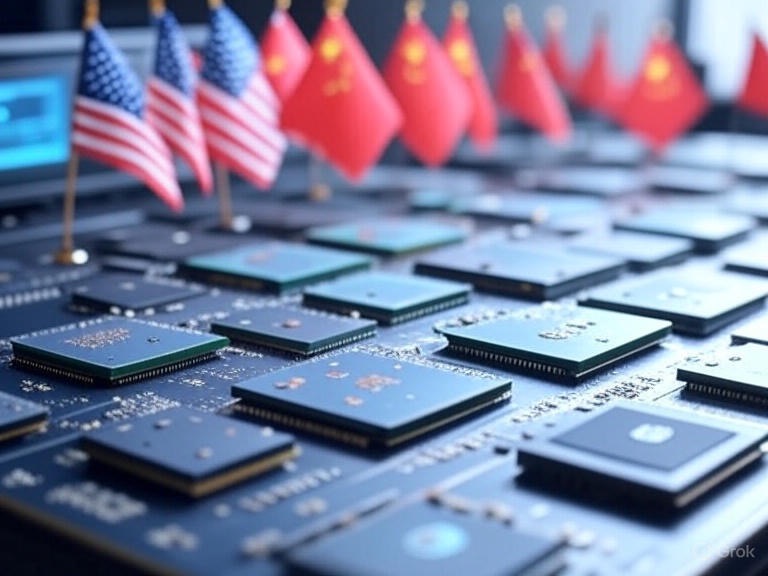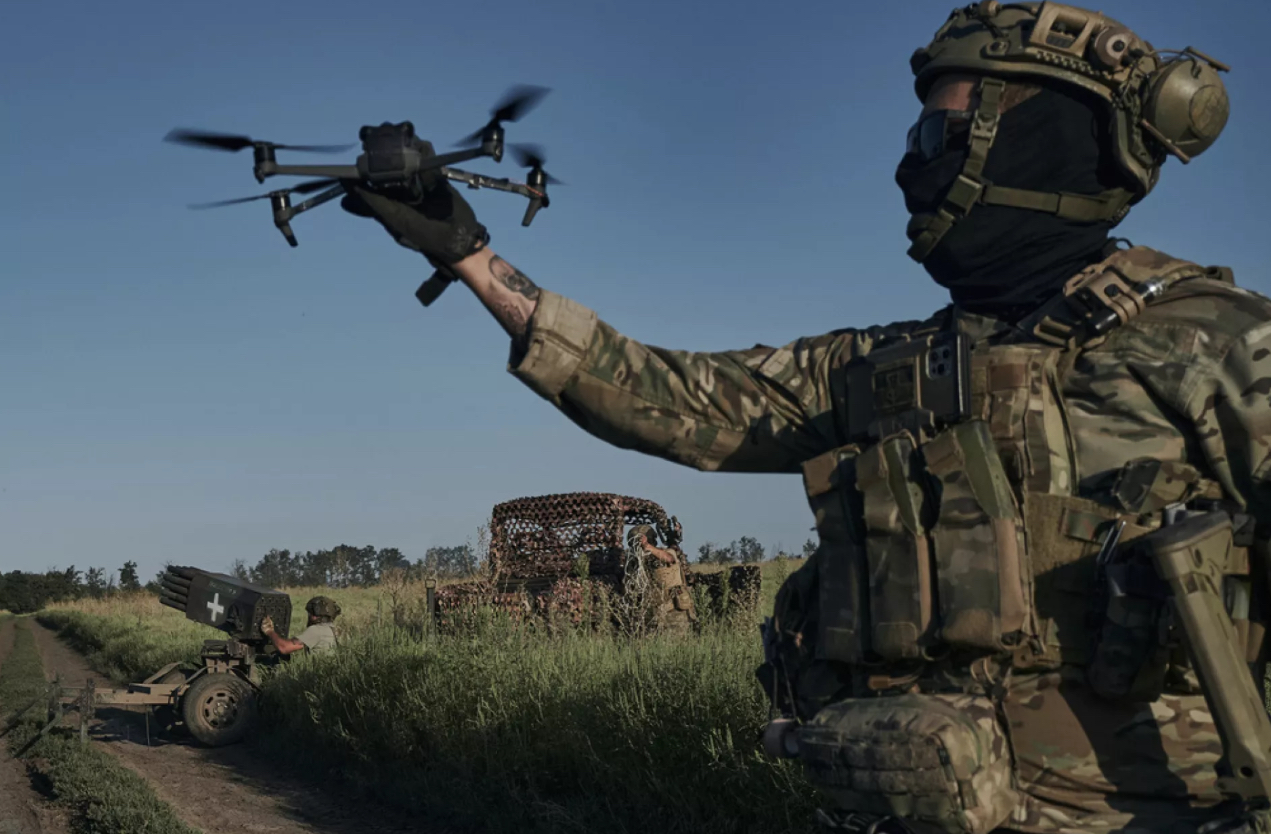When U.S. regulators imposed sweeping export bans on Nvidia’s most advanced AI chips, they expected to choke off China’s ambitions in artificial intelligence and reinforce America’s technological lead. Instead, they have sparked exactly the opposite: a surge in Chinese hardware innovation, a strategic pivot toward open-source AI, and a rising tide of disruptive models now filtering into global markets. The effort to contain has, paradoxically, accelerated both the resilience and the reach of China’s AI ecosystem.
The saga began in earnest when the U.S. Bureau of Industry and Security (BIS) introduced its “performance density” rule, which replaced the old focus on interconnect bandwidth and set hard limits on the compute per square millimeter of exported chips. The fallout was immediate and dramatic. ByteDance, Alibaba, Tencent, and other Chinese giants had prepaid over $16 billion for more than a million Nvidia H20 GPUs when, in April, BIS suddenly pulled the plug, freezing entire shipments on the tarmac and leaving data centers half-finished and billions in sunk costs. Although provisional licenses have since allowed some deliveries to resume, the episode has permanently altered risk calculus for every major Chinese AI operator. No company wants its future hostage to the whims of a U.S. export license.
Facing this squeeze, Chinese firms pivoted at breakneck speed. Huawei, the perennial ban-proof survivor, doubled down on its domestic hardware line by fusing two Ascend 910B chips into a new flagship: the Ascend 910C. The company pushed this into mass production this spring, building clusters of 384 chips, dubbed “CloudMatrix-384” capable of matching or exceeding Nvidia’s top-tier NVL72 in raw AI throughput, albeit with considerably higher power consumption. This sort of brute-force, domestically designed system would have been unthinkable before the export controls made supply chain independence an existential priority.
Just as important has been the software response. Previously, Chinese tech leaders guarded their models and data as fiercely as any Western rival. The sanctions flipped the equation: open source became both a necessity and a competitive weapon. Tsinghua University released GLM-4-a multimodal, 32-billion-parameter model-openly on GitHub with a permissive MIT license, inviting the world to build on it. DeepSeek, a rising AI champion, followed with the release of R1 and then V3, openly boasting of fitting massive pre-training runs into a fraction of the GPU hours needed by their Western peers. Their logic is as strategic as it is technical: if U.S. restrictions limit access to hardware, China can shift the battleground to algorithms and freely share the results, undermining closed-source Western incumbents in the process.
This shift is already reshaping global AI competition. Chinese infrastructure planners are racing to build massive new data centers, thirty-six desert-based megacenters, according to Bloomberg, are in various stages of planning or construction. A single new facility in Xinjiang will house 40,000 Nvidia accelerators to power DeepSeek’s next generation of large language models. The reality is that eight export-compliant H20s are needed to match a single top-shelf H100, but China’s scale and government backing make the math workable. The critical lesson is that reliance on foreign silicon is no longer an option; redundancy and indigenous design are now the prime directive.
Meanwhile, Nvidia is trying to thread the regulatory needle with new “sanction-safe” products like the RTX Pro 6000D (B40) a Blackwell-class chip stripped of its most sensitive features and capped at 96GB of standard GDDR7 memory. It’s a compromise, not a breakthrough, and risks irrelevance if China’s domestic AI hardware continues its rapid ascent.
Western observers should take note: these open-source Chinese models GLM-4, DeepSeek’s R1 and V3, and a proliferation of lightweight INT4 checkpoints—are already finding their way into European and American startups keen to bypass the cost and lock-in of proprietary U.S. APIs. Once code and weights are public, no export restriction can contain their global spread. The sanctions, intended to cripple, have instead democratized advanced AI, fueling a new generation of competitors both inside and outside China.
To be clear, China still lags at the absolute cutting edge. Training models at GPT-5 scale remains out of reach for now, as domestic fabs have yet to match the sophistication and yield of Nvidia’s most advanced designs. But the embargo has accelerated algorithmic and system-level innovation, fostering an open-source culture with global impact. In trying to bottleneck hardware, the U.S. has pushed its main rival to advance in every other dimension and to share those advances with the world.
This is the unintentional legacy of the chip war: the sanctions have birthed not just hardware workarounds, but a radically open AI ecosystem, with China leading a new wave of model releases and global collaboration. The West’s attempt to contain Chinese AI has, in practice, fertilized a more dynamic and uncontrollable field. In the next phase of the AI race, China won’t just be catching up it will be setting the pace, one open-source release at a time.
Disclaimer: Important Legal and Regulatory Information
This report is for informational purposes only and should not be construed as financial, investment, legal, tax, or professional advice. The views expressed are purely analytical in nature and do not constitute financial guidance, investment recommendations, or a solicitation to buy, sell, or hold any financial instrument, including but not limited to commodities, securities, derivatives, or cryptocurrencies. No part of this publication should be relied upon for financial or investment decisions, and readers should consult a qualified financial advisor or regulated professional before making any decisions. Bretalon LTD is not authorized or regulated by the UK Financial Conduct Authority (FCA) or any other regulatory body and does not conduct activities requiring authorization under the Financial Services and Markets Act 2000 (FSMA), the FCA Handbook, or any equivalent legislation. We do not provide financial intermediation, investment services or portfolio management services. Any references to market conditions, asset performance, or financial trends are purely informational and nothing in this report should be interpreted as an offer, inducement, invitation, or recommendation to engage in any investment activity or transaction. Bretalon LTD and its affiliates accept no liability for any direct, indirect, incidental, consequential, or punitive damages arising from the use of, reliance on, or inability to use this report. No fiduciary duty, client-advisor relationship, or obligation is formed by accessing this publication, and the information herein is subject to change at any time without notice. External links and references included are for informational purposes only, and Bretalon LTD is not responsible for the content, accuracy, or availability of third-party sources. This report is the intellectual property of Bretalon LTD, and unauthorized reproduction, distribution, modification, resale, or commercial use is strictly prohibited. Limited personal, non-commercial use is permitted, but any unauthorized modifications or attributions are expressly forbidden. By accessing this report, you acknowledge and agree to these terms-if you do not accept them, you should disregard this publication in its entirety.



